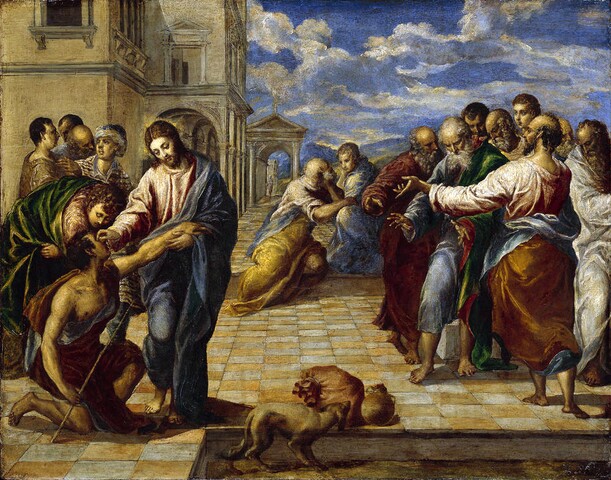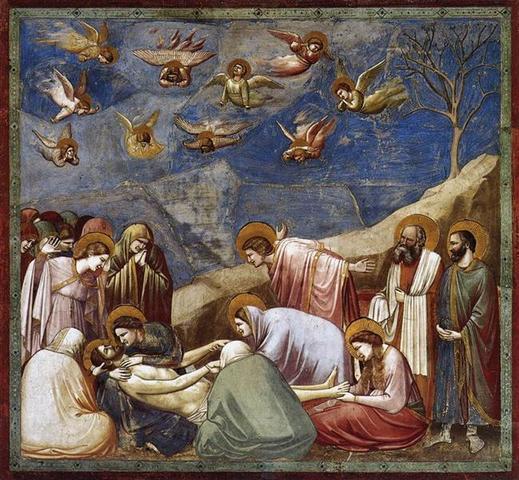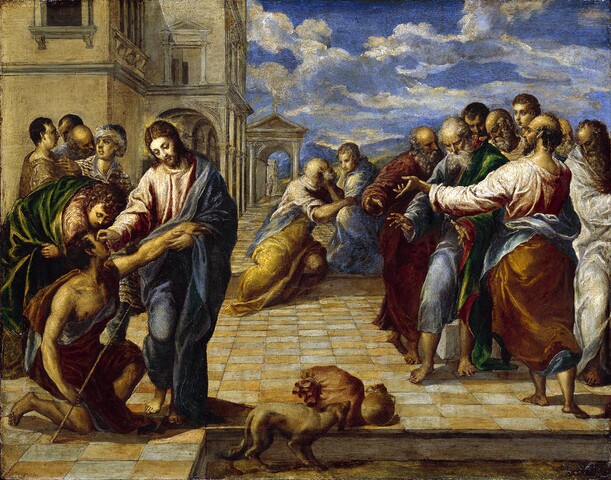As part of an essay we wrote several years ago exploring what the four Gospels have to say about Jesus and suffering, we could easily have begun with any number of historical or scriptural references—from Liberty Jail and the Prophet Joseph in the winter of 1838-39 to Job, whose friends blamed his afflictions on his supposed sins, to the multiple souls described in the Gospels who were plagued by disease, misfortune, natural disasters, or simply the consequences of bad or even impetuous decisions.
And certainly, the most obvious and infinitely consequential example of suffering would have been the Messiah Himself, the One whom God entrusted with the responsibility to endure, comprehend, and then transcend an entire universe of suffering. But because of the recent tragic death of a wonderful young man, a nephew, who left behind a widow and their four very young children, we wanted to revisit that essay in the hope of rediscovering a balm of solace we found in writing the original.
In the original essay, we chose a work of art, a hymn, and a passage from the scriptures for our meditation on Jesus and suffering. The art is a 14th century painting of Mary’s suffering at Golgotha as she cradled her crucified Son; next, a contemporary hymn by Emma Lou Thayne asks and answers questions about longing for peace in the midst of suffering; finally, a biblical text from John’s Gospel offers simple enlightenment as to the why of it all. Each example uses visual or written vocabulary that condenses our deepest feelings about the word suffering and it’s numerous synonyms found in every language.
The Image of Suffering
A tiny chapel built and decorated around 1300 A.D. in Italy is known as the Arena Chapel by virtue of its proximity to an ancient Roman amphitheater. The artist called Giotto decorated literally every inch of the interior.
The painting known as The Lamentation is on the chapel’s north wall. Its subject is not actually part of any account in the four Gospels, but it is surely an image of pure, abject suffering. Ten angels in the sky wring their hands, cover their faces, contort their bodies, and open their mouths in silent agony. Grief-stricken men look on, their faces showing solemn, desolate expressions. John the Beloved flings his arms behind himself as he bends down toward the dead Jesus, keening with his entire body. It is the women, however, whose suffering grips us the most—especially Mary, the mother of Jesus. She cradles her son in her lap, her eyes examining His unresponsive face as if imploring Him to stir.

Giotto's Lamentation fresco from the Arena Chapel in Padua, Italy (1304-1306). Wikimedia Commons.
We know that within days of the scene He awakened, eternally renewed, but for the time-locked moment of the painting, pools of suffering surround her and her Son as she weeps. In person, we cannot help participating in nearly suffocating grief despite the deteriorated condition of the work.
The Hymn About Anguish and Aching
One of our most beloved hymns, written by poetess Emma Lou Thayne, came “out of a troubled time” in her life. The circumstances of the poem’s composition were personal, but the sentiment is universal inasmuch as we all strain to find relief from, or at least explanations for, suffering. (Learn more about the story behind this hymn.) The first two of four verses read:
Where can I turn for peace? Where is my solace When other sources cease to make me whole? When with a wounded heart, anger, or malice, I draw myself apart, Searching my soul? Where, when my aching grows, Where, when I languish, Where, in my need to know, where can I run? Where is the quiet hand to calm my anguish? Who, who can understand?
► You'll also like: How We Can Dispel Mental Illness Myths + The Story Behind the "Mental Health Hymn"
How We Wrongly Justify or Explain Suffering
As is so often the case, before we can consider Jesus’s genuinely radical teachings on suffering, we should first think about the religious and cultural context for them.
In Jesus’s day, there was a generally accepted assumption about the connection between sin and sickness. In the ninth chapter of the Gospel of John we read, for example, an account of Jesus healing the man born blind. The reaction of a group of rigid, rule-bound Pharisees was typical of the day. They assumed that the man or his parents caused his blindness by committing one or more of hundreds of specified sins (John 9:1-12). It was commonly accepted that the man’s blindness could even have been caused before birth; men and women could somehow actually sin in utero.

El Greco's Healing of the Man Born Blind found in Dresden (1567).
The man’s suffering was daily complicated by a world that did nothing to ease navigation of every-day chores for the sightless. It was further compounded by the terrible burden of guilt he and his parents would have felt for the nameless sins they had supposedly committed—not to mention his community’s general speculation about these secret sins.
Rabbi Harold Kushner wrote that “when bad things happen to good people,” we, like others who are grief-stricken and like Sister Thayne or the Pharisees in John, ransack our or others’ pasts to look for offensive behavior. Or we may feel estranged from God or His Son, abandoned by Him. And instead of receiving promised blessings, we and others who are wounded and inconsolable feel that God has punished us by multiplying our wounds to further afflict them—often “without cause” (Job 9:17 KJV).
“Such reasoning . . . creates guilt even where there is no basis for guilt,” writes Rabbi Kushner. “It makes people hate God, even as it makes them hate themselves. And most disturbing of all, it [may] not even fit the facts.” It is also a way for observers, like Job’s friends or the Pharisees, to preserve their faith in God by shifting the blame away from God’s supposed blind but divine retribution and placing it on the individual sufferer. It is a way of trying to preserve God’s reputation.
Thus, we often trudge on, bereft of friends, family, and even God, left to ourselves to deal with our plight in terrible isolation.
While we may bring much of our suffering upon ourselves by our own decisions and deceptions, other things—like morally blind natural disasters, germs, and genetic mutations—also cause suffering. And “anyone who recognizes the names of Auschwitz and My Lai, or has walked the corridors of hospitals and nursing homes,” writes Kushner, “cannot dare to answer the question of the world’s suffering by quoting Isaiah: ‘Tell the righteous it shall be well with them’” (Isaiah 3:10 KJV). What Kushner calls the laws of nature and what scientists call the laws of physics govern the universe, and these laws, for good or ill, affect the righteous and the wicked.
How Jesus Taught Us to Respond to Suffering
If we return to Jesus and the man born blind, we understand why Jesus said, “Neither this man nor his parents sinned” to cause his lack of sight (John 9:3). Jesus knew that it is unacceptable to suggest that those who suffer deserve what they get. Our lives are too complex for that kind of blame and vengeance, because although sinners often suffer because of the consequences of their immoral and corrupt lives, suffering also comes from many other sources as well—carelessness, accidents, the intentional acts of others, and natural disasters. Jesus said, “For [your Father in Heaven] gives His sunlight to both the evil and the good, and He sends rain on the just and the unjust alike” (Matthew 5:45 NLT).
Jesus’s view was that suffering has many different causes; it is not always a result of personal iniquity. It is a result of life. Although that may be comforting in the abstract, it is of little comfort to those who, for whatever reason, are in the throws of terrible suffering. And it does not answer the nagging question of why an all-powerful God doesn’t just step in and do something about all that injustice.
So although the restored gospel of the Messiah teaches it is not correct to believe that the God who loves us created evil—He did not!—we concluded our study of Jesus and suffering by turning our attention to the question of how Jesus taught His followers to endure and even overcome suffering, whatever its causes. Or in Rabbi Kushner’s words, “When bad things happen to good people,” what is our reaction? What do we do about the sufferer and suffering?
We surely must acknowledge in a discussion on this subject that God sometimes chooses not to intervene. Certainly, He is powerful enough to relieve our sorrows. And we feel He does not. But that is not the point. Despite this paradox, Jesus did not explain why God interposes Himself at times and not at others except to explain that God did not create evil. Thank goodness for Joseph Smith and the revelations of the restored gospel for that understanding. When God does intervene, Jesus taught us by His example that we should rejoice and give thanks. When God does not intervene, Jesus taught us by His example to bear our grief patiently—to endure.
The joy-and-gratitude side of the equation is marvelous. There is hardly a page in the four Gospels that does not attest to Jesus’s compassion as the sick are healed and the dead are raised. “No matter what their diseases were, the touch of His hand healed every one” (Luke 4:40 NLT). And in our own lives we also experience the intervention of God, and that undeniably reassures us of God’s presence in our lives—even in some seemingly insignificant matters. In this we rejoice. Then we press on.
Yet sometimes, when only a miracle will suffice, our intense desires and faithful prayers do not bring about the yearned-for result. Nor does faith consistently quiet our fears and ease our burdens. In some situations we are left bereft and feeling abandoned. As President Gordon B. Hinckley observed at the passing of his wife, “Only those who pass through this dark valley know its utter desolation.” He said there are times in our lives when there “is a consuming loneliness that increases in intensity. It painfully gnaws at [our] very soul.”
We come to understand what the parents of a teenage daughter lost to cancer knew: that His promise that He will not leave us “comfortless” does not mean He will comfort us at all times (John 14:18 KJV). Yet during times of suffering, the only solution for mortals is to summon faith in Jesus, to “lift up [our] heads,” and to rejoice in His promises (Ps. 24:7, 9 KJV).
We therefore write our commitment to remember this Jesus, who is “the author and finisher of our faith,” who “endured the cross, despising the shame” (Heb. 12:2 KJV). We will place our trust in the promise that our “chastening” will yield “the peaceable fruit of righteousness” (Heb. 12:11 KJV). In days to come we take comfort in the thought that “we shall hunger no more, neither thirst anymore; . . . and God shall wipe away all tears from [our] eyes” (Rev. 7:16–17 KJV). So it is that Emma Lou Thayne finished her exquisite hymn with these lines:
Where, when my aching grows, Where, when I languish, Where, in my need to know, where can I run? Where is the quiet hand to calm my anguish? Who, who can understand? He, only One. He answers privately, Reaches my reaching In my Gethsemane, Savior and Friend. Gentle the peace he finds for my beseeching. Constant he is and kind, Love without end.

James and Judith McConkie are the authors of Whom Say Ye That I Am: Lessons from the Jesus of Nazareth, published by Kofford Books. It is available in print, Kindle and Audible formats at Deseret Book stores and online and through barnesandnoble.com and amazon.com. This is the eighth in a series of essays about the book. Watch for more on ldsliving.com.





